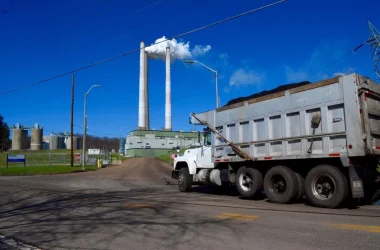From the Office of the Governor:
CHARLESTON, W.Va. — After several years of steady increases, the West Virginia Department of Health and Human Resources (DHHR) today released preliminary data on 2018 fatal drug overdoses in West Virginia that suggest a leveling off or slight decrease in the total number of overdose deaths. The projected decrease of overdose deaths occurring for 2018 is expected to be a 6 percent decline compared to 2017 data.

“It’s incredibly heartening to see that we are finally starting to make some incredible strides in our fight against the terrible drug crisis that continues to hurt the people of our state and the entire nation. I’ve said for a long time that fixing this epidemic is the single most important thing that we absolutely need to do,” Gov. Jim Justice said. “But we still have a lot of work to do and we need to keep pushing for more and more solutions to this terrible problem.”
It is estimated that the final 2018 overdose deaths will be approximately 952 deaths. (This figure is calculated using reported deaths, historical data on pending records and causes of death, and the total number of pending records which remain unclassified as to the cause of death.) To date, DHHR’s Health Statistics Center has recorded 888 overdose deaths for 2018 with a number of deaths still pending a cause of death determination and a majority expected to be classified as drug overdose deaths.
“It is certainly encouraging to see this decline in overdose deaths,” said Dr. Cathy Slemp, State Health Officer and Commissioner of DHHR’s Bureau for Public Health. “The decrease reflects the incredible support we’ve had from Governor Justice in fighting the disease of addiction, not to mention the hard work of individuals, agencies, and communities across the state, as well as changing substance use patterns. We still lose far too many West Virginians to this disease. There clearly remains much work for all of us to do together.”
Shifts in Drug Use:
For most individuals who die of an overdose, more than one drug is detected. Looking at patterns of involved substances can identify drug use trends. Based on the preliminary 888 drug overdose deaths occurring in West Virginia in 2018:The percent of overdose deaths involving methamphetamine continued to increase. More than one-third (36%) of drug overdose deaths in 2018 involved methamphetamine. This continues a significant and rapidly rising trend seen in recent years (2014: 3%; 2015: 7%; 2016: 12%; 2017: 23%; 2018: 36%).
More than half of all methamphetamine-related deaths also involved fentanyl.Opioids (including illicit and prescription opioids) are still the most common type of drugs seen in overdose deaths. Opioids were involved in 82% of overdose deaths in 2018. This is a decline from 2017 when 86% of overdose deaths involved one or more opioids.Fentanyl and heroin remain the most common opiates seen in overdose deaths (59% and 23% of deaths involved these substances respectively in 2018).For the first time since 2014, the percent of overdose deaths involving fentanyl began to level off.
Fentanyl, however, is still involved in nearly 60% of drug overdose deaths (2014: 9%; 2015: 25%; 2016: 41%; 2017: 59%; 2018: 59%).Heroin remained a frequently observed substance in overdoses, although a slight decline has been seen in recent years (2016: 29%; 2017: 26%; 2018: 23% of overdose deaths involved heroin).In general, the presence of prescription medications (opioids, benzodiazepines, and others) in those dying of overdose continues to decline.
The most common medications seen in overdose deaths are Oxycodone (10% in 2018, down from 32% in 2014) and Alprazolam (10% in 2018, down from 34% in 2014).Cocaine was involved in approximately 1 out of every 5 drug overdose deaths in 2017 and 2018. After several years of increases, the percent of overdoses involving cocaine held fairly steady in 2018 (2014: 9%; 2015: 14%; 2016: 18%; 2017: 20%; 2018: 19%).
County-Level Trends:
Based on preliminary 2018 data:The four counties with the greatest number of overdose death occurrences in 2018 were Cabell (at least 149), Kanawha (at least 145), Berkeley (at least 73) and Raleigh (at least 54). These numbers will increase slightly as data are finalized. Combined, these counties account for approximately half of the state’s 2018 overdose deaths.Compared to 2017, overdose deaths for these four counties in 2018 show the following trends:Berkeley and Cabell will see marked declines. (Cabell will see between a 22% and 26% decline in overdose deaths. Berkeley will see between a 17% and 22% decline.)Drug overdose deaths in Kanawha County and Raleigh County will remain more stable. (Kanawha will see between a 3% decline and an 9% increase in overdose deaths. Raleigh will see between a 10% decline and a 3% increase in overdose deaths.)21 counties had at least 10 or more overdose deaths in 2018:Seven are projected to see a clear decrease (Berkeley, Brooke, Cabell, Jefferson, Logan, Putnam, and Wayne).Nine are projected to see a clear increase (Boone, Greenbrier, Hampshire, Harrison, Mercer, Monongalia, Ohio, Wood, and Wyoming). Of these counties, Wood County is projected to have the largest increase (between 57% and 86%).Two are projected to either remain stable or increase (McDowell, and Morgan).For the final three counties with 10 or more overdose deaths in 2018, an increase or decrease cannot yet be definitively projected (Fayette, Kanawha, and Raleigh).
Media contact: [email protected] or 304-558-7899





